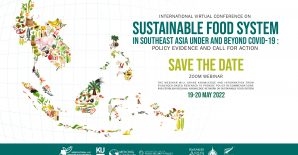News and Analysis
Tajik expert predicts that the USD exchange rate will rise to 1:11 in Tajikistan
(Asia-Plus, 30 Nov 2015) Tajik economic analyst Alisher Qodirov considers that the exchange rate between the dollar (USD) and the Tajik national currency, the somoni, will continue to rise until a balance between demand and supply for cash currency is established in the country. “Taking into account the current situation in Russia and Kazakhstan, which are our main trade partners, I think that the USD exchange rate will rise to 1:9 or event 1:11,” Qodirov noted.
Nazarbayev: Kazakhstan de jure WTO Member
(AKI-press, 30 Nov 2015) President of Kazakhstan Nursultan Nazarbayev declared that Kazakhstan became de jure the full member of the WTO on November 30.
“Today, on November 30, Kazakhstan de jure becomes the full member of the WTO. It will be officially declared at a meeting of WTO general assembly. This event is an important milestone in the history of independent Kazakhstan,” Nazarbayev said delivering his annual address to the nation.
Fitch: Uzbekistan's Banking Sector Stable; but External Pressures Have Increased
(Reuters, 27 Nov 2015) Fitch Ratings says in a new report that the outlook for Uzbekistan's banking sector remains stable, supported by strong state-led investment and still high domestic consumption. However, lower commodity prices, most notably for oil and cotton, a slowdown in major CIS trading partners and a drop in remittances from Russia may put pressure on Uzbekistan's economy. Banks' reported asset quality is adequate with impaired loans averaging a moderate 4.7% of total loans and reserve coverage at a comfortable 90% at end-2014 (the last date at which most banks produced IFRS accounts). Fitch expects asset quality metrics at end-2015 to be broadly in line with end-2014, given the so far limited impact on Uzbekistan's operating environment of negative external trends.
Dushanbe hosts workshop to bring knowledge on international tenure guidelines to Tajikistan
(Asia-Plus, 25 Nov 2015) The livelihoods of many in Tajikistan depend on secure and equitable access to land, forestry, fisheries and natural resources.
A two-day FAO workshop opening here tomorrow will help raise awareness of The Voluntary Guidelines on the Responsible Governance of Tenure, which constitute the first-ever global consensus on what it means to improve the conditions under which land and other resources are owned and managed. The Voluntary Guidelines on the Responsible Governance of Tenure of Land, Fisheries and Forests in the Context of National Food Security promote secure tenure rights and equitable access to land, fisheries and forests as a means of eradicating hunger and poverty, supporting sustainable development and enhancing the environment.
Russia moves forward with common currency for EEU despite Kazakhstan's opposition
(Tengri News, 25 Nov 2015) Creation of a common unit of account - a supranational currency - for the Eurasian Economic Union (EEU) has been a controversial issue since 2011. Today, Russia is once again actively considering introduction of a common monetary unit for the EEU, while Kazakhstan does not seem so eager to move forward with this project.
Chairman of State Duma's CIS Committee Leonid Slutskiy talked about naming the provisional common unit of account of the EEU evraz.
Publications
(C. Conrad, J.P.A. Lamers, N. Ibragimovc, F. Löw, C. Martius. 2015. Journal of Arid Environment. Elsevier Vol 124. Pp 150-159)
Abstract: In Central Asia, actual cotton rotation practices are repeatedly believed to resemble “Soviet cropping conditions” with continuous cotton sequences of six years or more. We investigated current cotton growing patterns in Khorezm, one representative cotton production region in Uzbekistan utilizing time series of 250-m MODIS satellite data. A Random Forest model was established using reference data of 2004–2007 to generate annual crop maps in 2000–2009. A linear model was applied to assess the spatial distribution of the longest observed cotton sequence within the ten-year observation period. All cotton-growing sequences were compared to the national crop rotation recommendations. The classification achieved an overall accuracy of 82%. We found that cotton remains the major crop in the region. It was cultivated for more than five out of the ten years on 46.5% of the cropland. But “Soviet cropping conditions” on less than 20% and officially recommended cotton sequences on more than 50% of the cropland challenge the notion that cotton mono-crop dominates Central Asia. Statistical analysis revealed that long cotton sequences preferably occur on fields far from settlements and under reduced soil suitability for irrigation. The results enable decision makers to better explain unfavorable cotton cultivation practices and to stimulate improvements.
(A. Hamidov, A.Thiel, D. Zikos. 2015. Environmental Science & Policy. Elsevier Vol 53 (B). Pp 175-191)
Abstract: The irrigation sector constitutes the backbone of Uzbekistan's economy, providing social and economic stability in the region. The sector collapsed with the fall of the Soviet Union, due to worsening of infrastructure conditions causing tensions among resource users. Subsequent irrigation management reforms were implemented in a top-down manner. More than a decade after the initial reforms – which established local Water Consumers Association (WCA) and transferred operation and maintenance responsibilities for on-farm irrigation canals – the poor performance of these associations is still apparent, illustrating the heritage of the strong role of state agencies in Uzbek water management that still affects collective irrigation management today. This paper identifies the necessary and sufficient conditions for successfully managing common pool resources (CPRs) and, more specifically, irrigation canal maintenance in the rural Bukhara region of Uzbekistan. Fifteen WCAs were examined regarding conditions that may facilitate successful irrigation canal maintenance. Methods involved focus group discussions and in-depth interviews with the associations concerned. Data gathered was analyzed using fuzzy-set qualitative comparative analysis. The results indicate that two paths of local factors can lead to well-maintained irrigation canals: (1) the combination of appropriate chairmanship skills with sustainable resource appropriation or (2) the combination of appropriate chairmanship skills with the presence of effective participatory governance. The results also illustrate the role of path-dependence and traditional co-production of irrigation management in Uzbekistan.
Hydrological Changes of the Ili River in Kazakhstan and the Possible Causes
(L. Guo, Z. Xia, H. Zhou, H. Feng, B. Yan. 2015. Journal of Hydrologic Engineering. Vol 20 (11))
Abstract: Hydrological changes of the Ili River were analyzed concerning the changes of annual runoff and its distribution features within a year measured by coefficient of variation and concentration degree. Abrupt changes were detected by the heuristic segmentation method. Possible causes of the hydrological changes were investigated considering climate changes and human activities (especially the reservoir operation and irrigation extension). The Mann-Kendall method was applied to estimate whether the temperature and precipitation were changed. The increased temperature and the decreased precipitation in the flood season may decrease the runoff. At the middle reaches, the impact of the reservoir is significant and may be the main factor leading to the abrupt decreases in annual runoff and its intra-annual variability and concentration. The increased water surface area of the reservoir aggravates the evaporation and leads to annual runoff reduction. The reservoir regulates runoff by storing water in the flood season and releasing water in the dry season. (C) 2015 American Society of Civil Engineers.




Leave a Reply